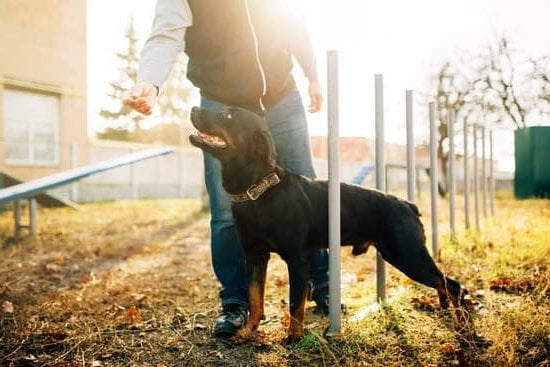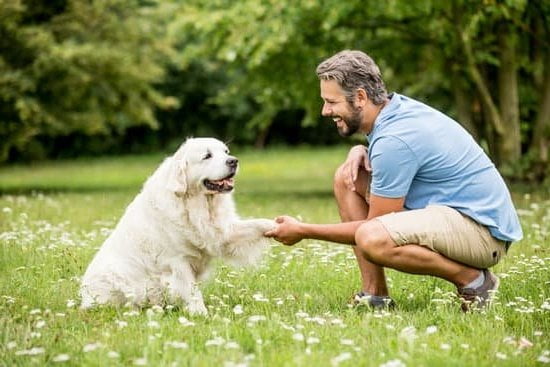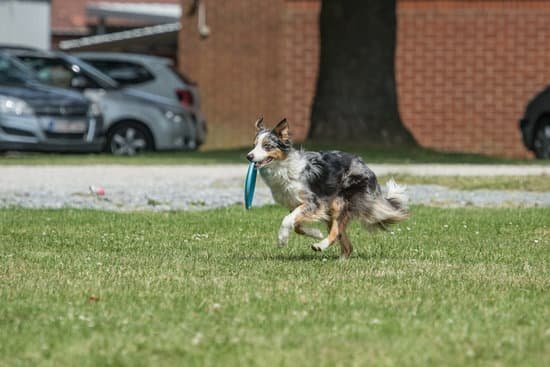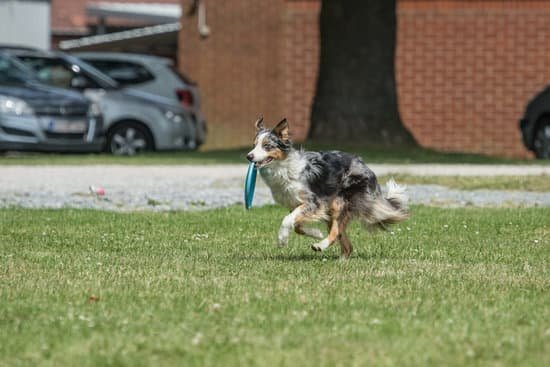Service training for dogs is a valuable and essential aspect of their development. In this article, we will explore the importance of service training and how it can greatly benefit both dogs and individuals with disabilities or specific needs. Whether it is assisting those with mobility issues, providing emotional support, or helping guide the blind, service dogs play a vital role in enhancing the lives of their handlers.
The benefits of service training are numerous. Not only does it enable dogs to perform important tasks that aid individuals with various challenges, but it also promotes their overall well-being and mental stimulation. Service dogs are trained to exhibit exceptional obedience, focus, and reliability, allowing them to assist their handlers effectively and safely in a wide range of situations.
For individuals with disabilities or specific needs, service dogs offer much more than physical support. They provide companionship, emotional stability, and an increased sense of independence. From retrieving items to alerting to seizures or guiding the visually impaired through busy streets, these highly trained animals have proven invaluable time and time again.
Throughout this article, we will delve into different aspects of service training for dogs. We will discuss the various types of service dogs and their specific roles and tasks. Readers will also learn how to assess their dog’s suitability for service training while gaining helpful tips on finding a qualified trainer who can guide them through the process.
By unpacking basic and advanced training techniques for specific tasks and exploring socialization methods for public settings, readers will discover ways to maintain a well-trained service dog throughout its life. Lastly, we’ll address certification processes and legal rights associated with owning a service dog.
Prepare yourself to embark on an exciting journey as we explore the world of service training for our furry friends.
Understanding the Different Types of Service Dogs
Service dogs play a crucial role in assisting individuals with disabilities or specific needs, and they are trained to perform a wide range of tasks depending on their specific type. By understanding the different types of service dogs, individuals can better determine which type may be suitable for their needs or the needs of someone they know.
One common type of service dog is the mobility assistance dog. These dogs are trained to help individuals with physical disabilities by providing support in walking or navigating their environment. They can assist in tasks such as retrieving items, opening doors, or even pulling a wheelchair.
Psychiatric service dogs are another important type. These dogs are trained to provide support and assistance to individuals with mental health conditions. They can help alleviate symptoms of anxiety or depression by providing comfort and emotional support. Additionally, they can be trained to perform specific tasks such as interrupting self-harming behaviors or detecting signs of an impending panic attack.
Guide dogs for the blind are among the most well-known types of service dogs. These highly-trained dogs serve as companions and guides for individuals who are visually impaired or blind. They assist in navigating obstacles, avoiding hazards, and safely crossing streets.
Other types of service dogs include hearing assistance dogs for individuals with hearing impairments, medical alert dogs that can detect certain medical conditions such as seizures or low blood sugar levels, and autism support dogs that offer comfort and help individuals manage sensory overload.
Understanding the different types of service dogs is essential when considering whether one may be suitable for you or someone you know. Each type has specific roles and tasks they are trained for, making them useful companions for those with different disabilities and needs. Service dog training organizations often have extensive knowledge about these different types and can provide further guidance on finding the right fit.
Assessing Your Dog’s Suitability for Service Training
Before embarking on the journey of service training your dog, it is important to assess their suitability for this type of work. Not all dogs are suited to becoming service dogs, as it requires a particular set of traits and characteristics. Assessing your dog’s suitability will not only save you time and effort but also ensure that the training process is beneficial for both you and your canine companion.
To determine if your dog is suitable for service training, consider their temperament, behavior, and physical abilities. One important trait is the dog’s ability to remain calm and focused in a variety of situations. Service dogs often encounter busy environments, distractions, and stressful situations, so it is crucial that they can maintain composure and concentrate on their tasks.
Furthermore, a good candidate for service training should display a strong willingness to please their handler. Dogs that are naturally motivated by rewards and praise tend to excel in service training. Additionally, they should have an aptitude for learning new tasks quickly and retaining the information over time.
Another factor to consider is the dog’s overall health and physical capabilities. Service dogs may need to perform tasks that require strength or endurance such as pulling a wheelchair or assisting with mobility. It is essential that your dog does not have any underlying health issues that could hinder their ability to perform these tasks safely.
To help you assess your dog’s suitability for service training, we have created a checklist or questionnaire that covers these important traits and characteristics. By answering these questions honestly and objectively, you can gain a better understanding of whether your dog has what it takes to become a successful service dog.
Remember, not every dog will meet all the criteria perfectly but understanding your dog’s strengths and weaknesses will allow you to make an informed decision about pursuing service training or exploring other avenues where your beloved companion can contribute positively toward helping others.
Finding a Qualified Service Dog Trainer
Why Working with a Qualified Service Dog Trainer is Important
When it comes to service dog training, finding a qualified and experienced trainer is crucial. Service dogs play a vital role in assisting individuals with disabilities or specific needs, and their training must be handled by professionals who understand the unique requirements of these animals. A qualified service dog trainer has the knowledge and expertise to train service dogs effectively, ensuring that they are capable of performing their designated tasks safely and reliably.
Training a service dog involves much more than teaching basic obedience commands. These dogs need to learn complex tasks that are tailored to the individual’s needs, such as retrieving items, opening doors, providing emotional support, and more. A skilled trainer will have experience in training service dogs for specific tasks and will know how to address challenges or setbacks that may arise during the training process.
Tips for Finding a Qualified Service Dog Trainer
Finding a qualified service dog trainer can seem daunting, but with some research and careful consideration, you can find the right professional for your dog. Here are some tips to help you in your search:
- Look for certifications: Check if the trainer possesses any relevant certifications or qualifications from reputable organizations such as the International Association of Canine Professionals (IACP) or Assistance Dogs International (ADI). These certifications indicate that the trainer has met certain standards and follows ethical practices.
- Ask for recommendations: Seek recommendations from other service dog handlers or disability organizations in your area. They may be able to provide insights into trainers who have a good reputation and track record of success.
- Interview potential trainers: Schedule consultations with potential trainers before committing to their services. Use this opportunity to ask questions about their background, training methods, previous experience with service dogs, and what kind of approach they take when working with clients.
- Observe training sessions: If possible, ask if you can observe one or more training sessions conducted by the trainer. This will give you a firsthand look at their training methods, how they interact with the dogs, and their overall teaching style.
- Trust your instincts: It’s important to trust your instincts when choosing a service dog trainer. If something doesn’t feel right or if you have concerns about their methods, it may be best to continue your search until you find a trainer that aligns with your values and goals.
By finding a qualified service dog trainer, you are investing in the success of your dog’s training and ultimately ensuring that they can provide the necessary assistance to individuals in need. Remember to take your time during this process to find the right match for both you and your furry companion.
Basic Training Commands and Skills
Training your dog in basic commands and skills is a crucial step in service training. These foundational commands form the building blocks for more advanced tasks and behaviors that service dogs are required to perform. Here are some key basic training commands and skills that every service dog should master:
- Sit: Teaching your dog to sit on command is essential for maintaining control and ensuring obedience in various situations. To train this command, hold a treat close to your dog’s nose, then raise it slowly above their head, causing them to naturally sit down as they follow the treat. Once they are in a sitting position, say “sit” and reward them with the treat.
- Stay: The stay command is vital for keeping your service dog in place when necessary. Start by commanding your dog to sit or lie down, then with an open palm facing them, firmly say “stay.” Take a step or two back and gradually increase the distance over time before returning to them and offering praise or a treat.
- Come: Recall is an important command for calling your service dog back to you in potentially dangerous situations or when you need their assistance immediately. Begin by attaching a leash to your dog’s collar, then while kneeling down, gently pull on the leash while saying “come.” When they reach you, reward them with praise or treats.
- Down: Teaching your dog to lie down can help them remain calm and composed during stressful situations. Start with your dog in a sitting position, hold a treat near their nose, then slowly move it toward the ground between their front paws while saying “down.” Once they are lying down completely, reward them.
- Leave it/Drop it: This command is crucial for preventing your service dog from picking up objects that could be harmful or distracting during their work duties. Hold a desirable object (like a toy) in one hand while showing an equally enticing treat with the other hand. Close your fist around the toy, and say “leave it.” When they release their interest in the toy, reward them with the treat.
It’s important to note that each dog is unique and may require different training methods or additional commands specific to their tasks. Patience, consistency, and positive reinforcement techniques are key in training your service dog in these basic commands and skills. Remember to make training sessions short and frequent for optimal learning and bonding between you and your furry companion.
Advanced Training for Specific Service Tasks
Once your dog has mastered the basic training commands and skills, it’s time to move on to advanced training for specific service tasks. This section will guide you through the process of teaching your dog more complex tasks that are tailored to meet your individual needs or the needs of someone you’re training the dog for.
- Task Identification: The first step in advanced training is identifying the specific tasks that your dog needs to learn. Make a list of the tasks that would be most beneficial for you or the person who will be relying on the dog’s assistance. Some common examples include retrieving items, opening doors, turning lights on and off, providing stability or balance support, alerting to sounds, and providing emotional support.
- Breaking Down Tasks: Once you have identified the specific tasks, it’s important to break them down into smaller steps. For example, teaching a dog to retrieve an item may involve breaking it down into steps such as picking up the item from the floor, holding it in their mouth without chewing it, and bringing it back to you.
- Positive Reinforcement Training: As with basic training, positive reinforcement is key in advanced training as well. Use treats, praise, and rewards to motivate and encourage your dog during training sessions. Break each task down into small steps and gradually build up to performing the complete task.
- Step-by-Step Instructions: It can be helpful to have step-by-step instructions when teaching advanced tasks to your service dog. Write down each step in clear and concise language so that you can easily refer back to it during training sessions.
- Consistency and Practice: Advanced service tasks may take longer for your dog to master compared to basic commands. It’s important to be patient and consistent with your training efforts. Set aside regular practice sessions and dedicate time each day for reinforcing these advanced skills.
- Seek Professional Guidance if Needed: If you are struggling with teaching a specific task or need additional guidance, don’t hesitate to reach out to a professional service dog trainer. They can provide expert advice and help you troubleshoot any challenges you may be facing.
Remember that advanced training for specific service tasks should always be approached at the pace that is most suitable for your dog. Patience, consistency, and a positive training approach are essential in ensuring your dog’s success in becoming a skilled service dog.
Socializing and Public Access Training
The Importance of Socializing Service Dogs
Socializing is a critical aspect of service dog training as it helps dogs develop the necessary skills and confidence to handle various public settings and interactions. Proper socialization ensures that service dogs can behave appropriately and remain focused on their tasks, even in challenging or distracting environments.
When training a service dog, it’s important to expose them to a wide range of scenarios, locations, and people. This includes introducing them to different noises, smells, crowds, other animals, and various forms of transportation. Socialization also involves familiarizing the dog with common situations they may encounter while performing their specific tasks or assisting their handler.
Strategies for Socializing your Service Dog
There are several strategies you can employ to effectively socialize your service dog:
- Gradual Exposure: Begin socialization in low-stress environments and gradually increase the level of difficulty by exposing your dog to more challenging situations over time.
- Controlled Encounters: Create controlled interactions with other people and animals. Teach your dog appropriate behaviors when meeting new individuals or encountering unfamiliar dogs.
- Positive Reinforcement: Use positive reinforcement techniques such as treats and praise to reward your dog for calm and appropriate behavior during socialization sessions.
- Desensitization: If your dog shows signs of fear or anxiety in certain situations, work on desensitizing them by gradually introducing those triggers in a controlled manner while providing positive experiences for them.
- Professional Assistance: Consider enrolling in obedience classes or working with a professional trainer who specializes in service dog training. They can provide guidance on effective socialization techniques tailored to your specific needs.
Public Access Training
Public access training focuses on teaching service dogs how to behave appropriately in public spaces such as stores, restaurants, transportation systems, and other community settings. The goal is for the dog to remain calm, well-behaved, and focused on their tasks while ignoring distractions.
During public access training, it is essential to reinforce basic obedience commands and practice them in real-world scenarios. This includes commands such as “sit,” “stay,” “wait,” and “leave it.” It is also important to train your dog to walk politely on a leash, ignore food or other items on the ground, and remain calm around people and other animals.
Additionally, it is crucial to teach your service dog to respond appropriately to public access challenges they may encounter, including elevator rides, escalators, automatic doors, and crowded spaces. This can be achieved through gradual exposure and positive reinforcement training.
Remember that public access training is an ongoing process that requires consistent practice. Regularly exposing your service dog to new environments and reinforcing their training will help them develop the skills necessary to confidently navigate public settings while providing assistance to their handlers.
Maintaining and Refining Service Training
Service dogs undergo extensive training to acquire the skills necessary to assist individuals with disabilities or specific needs. However, the training does not stop once a dog has completed its initial training program. Ongoing maintenance and refinement of service training are essential to keep a dog’s skills sharp and ensure their effectiveness in assisting their handlers.
To maintain and refine service training, it is crucial for handlers to continue practicing and reinforcing the skills learned during the initial training period. Regular practice sessions should be incorporated into daily routines to keep the dog engaged and responsive to commands. These practice sessions can include reviewing basic obedience commands, such as sit, stay, come, as well as advanced tasks specific to the handler’s needs.
Consistency is key when maintaining service training. Handlers should strive to use the same cues and signals consistently so that the dog can confidently respond even in different environments or situations. Reinforcement techniques such as positive rewards, verbal praise, or clicker training can be utilized during practice sessions to motivate and reinforce desired behaviors.
Challenges or setbacks may arise during service training maintenance phase. It is important for handlers to address these challenges promptly and seek guidance from professional trainers if needed. Professional trainers can provide valuable insight, tips, and recommendations on how to overcome specific challenges and refine certain tasks.
By continuously maintaining and refining service training, handlers can ensure that they have a reliable and proficient service dog by their side. A well-trained service dog not only provides vital assistance but also enhances the overall quality of life for individuals with disabilities or specific needs.
| Key Points | Details |
|---|---|
| Ongoing Practice | Regularly incorporate practice sessions into daily routines |
| Consistency | Use consistent cues and signals for confident responses in different situations |
| Challenges and Setbacks | Address challenges promptly and seek guidance from professional trainers |
Certification and Legal Rights of Service Dogs
Service dogs play a crucial role in the lives of individuals with disabilities or specific needs. These highly trained animals assist their handlers in various tasks, providing them with independence, support, and companionship. However, it is important to understand the certification process for service dogs and the legal rights granted to individuals who rely on them.
Certification Process:
While certification is not legally required for a dog to be considered a service dog, many handlers choose to have their canine partners certified to ensure public recognition and acceptance. The process typically involves an assessment by a qualified professional who evaluates the dog’s training, behavior, and ability to perform specific tasks. Certification programs vary depending on the country or region, but they often involve a combination of practical tests and evaluations.
Legal Rights:
Service dogs are afforded special legal protections under various laws and regulations. In many countries, including the United States, service dogs are protected under the Americans with Disabilities Act (ADA). This federal law guarantees that individuals with disabilities have the right to be accompanied by their service animals in public places such as restaurants, stores, airports, and other establishments open to the general public. These protections include allowing service dogs access to areas where pets are typically prohibited.
The ADA also prohibits businesses from asking for proof of certification or requiring identification for service dogs. While some states may offer voluntary identification cards or vests for service dogs, these are not required by law. It is essential for businesses and individuals to understand that requesting proof of certification or identification can create unnecessary barriers for those who rely on service dogs.
It is important for users of service dogs to familiarize themselves with local laws regarding accessibility rights as they can differ from state to state or country to country. It is advisable for handlers and their canine partners to wear identifying gear such as harnesses or vests that clearly indicate their status as working service animals. This helps minimize any potential conflicts or misunderstandings when accessing public places.
Conclusion
In conclusion, service training for dogs is not only important but also incredibly beneficial for both the dog and their handler. By undergoing service training, dogs are able to assist individuals with disabilities or specific needs, providing them with increased independence and support in their daily lives. Whether it be guiding the blind, retrieving items, or offering emotional support, service dogs can truly make a positive impact.
Having a well-trained service dog brings about a sense of joy and empowerment for both the dog and their handler. The bond that forms between them is strengthened through the training process, as they learn to communicate effectively and trust one another. This partnership enables individuals to navigate the world with confidence and ease, knowing that their service dog is there to assist them in various tasks and situations.
Furthermore, a well-trained service dog brings a newfound level of independence to their handler’s life. They can help with mobility assistance, opening doors, alerting to seizures or panic attacks, and much more. With a service dog by their side, individuals are able to go about their daily routines with greater freedom and peace of mind.
Frequently Asked Questions
Can I train my dog to be a service dog by myself?
Training a dog to be a service dog by yourself is possible, but it can be challenging and time-consuming. Service dogs require specialized training to perform tasks that assist individuals with disabilities. While some basic obedience can be taught at home, there are specific skills and behaviors that need to be honed through professional training programs.
These programs provide guidance on socialization, task training, public access manners, and more. It’s important to remember that not all dogs are suitable for service work, as they need the right temperament and physical capabilities. Seeking the help of experienced trainers or organizations specializing in service dog training is highly recommended to ensure proper development and success.
Is it ever too late to train a dog to be a service dog?
It is never too late to train a dog to be a service dog, although the success may vary depending on the individual dog and its prior experiences. Dogs can learn new skills at any age, but older dogs may have established habits that could affect their ability to adapt to service dog training. The key factors in training an older dog lie in its overall health, temperament, behavior history, and willingness to learn.
Dogs that have undergone proper socialization during their early years may have an advantage as they have been exposed to various environments already. By working with an experienced trainer who understands the unique needs of older dogs, it is possible to assess whether a particular dog can thrive as a service dog even if they start later in life.
What is the best age to train a service dog?
The best age to train a service dog typically lies between puppyhood and adolescence when dogs are more receptive and adaptable. Generally, it is recommended to begin training around 8-12 weeks old as this critical socialization period helps lay the foundation for future development. During this phase, puppies should be introduced to different people, animals, environments, sounds, surfaces, etc., in order to build positive associations and reduce fear or anxiety later on.
Early training focuses on basic obedience commands while gradually introducing more advanced skills as the puppy matures. However, each dog is unique, and individual development rates may vary. It’s essential to assess the individual dog’s temperament, health, and aptitude for learning when determining the best age to start service dog training.

Welcome to the blog! I am a professional dog trainer and have been working with dogs for many years. In this blog, I will be discussing various topics related to dog training, including tips, tricks, and advice. I hope you find this information helpful and informative. Thanks for reading!





